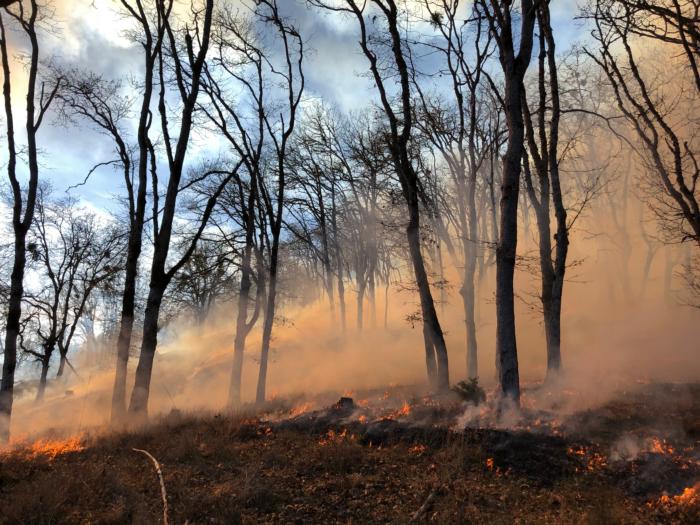Fire as a Tool
Fire has long been an important management tool in California. Native Americans were early innovators with fire, using it for millennia to cultivate basketry supplies, food resources, and other cultural necessities, and to maintain open forests and woodlands to facilitate travel and communication. Ranchers also used fire to maintain habitat for wildlife and domestic livestock, and in more recent decades, its uses have grown to include fuels reduction, invasive species control, and ecological restoration. Prescribed fire, or the use of fire under predetermined conditions to achieve specific objectives, is now well-recognized as one of the most versatile and cost-effective tools available, with utility for many different kinds of California land managers, from private ranchers and forestland owners to tribes to staff on national parks, forests, and wildlife refuges.

Prescribed fire events:
UCANR routinely hosts prescribed fire workshops throughout California to help private landowners learn more about fire.
More Resources
The Northern California Prescribed Fire Council is a venue for practitioners, state and federal agencies, academic institutions, tribes, coalitions, and interested individuals to work collaboratively to promote, protect, conserve, and expand the responsible use of prescribed fire in Northern California's fire-adapted landscapes.
The Southern Sierra Prescribed Fire Council's mission is to serve as a venue for practitioners, state and federal agencies, academic institutions, tribes, non-governmental organizations, coalitions, and interested individuals to work collaboratively to promote, protect, conserve, and expand the responsible use of prescribed fire and cultural fire in the southern Sierra Nevada’s fire-adapted landscapes and fire-dependent landscapes, and to promote public understanding and acceptance on the ecological and cultural importance of burning.
The Nature Conservancy's Fire Learning Network (FLN) engages dozens of multi-agency, community-based projects to accelerate the restoration of landscapes that depend on fire to sustain native plant and animal communities. By restoring this balance, the ecological, economic and social values of the landscapes can be maintained, and the threat of catastrophic wildfire can be reduced. Collaborative planning, implementation, adaptive management and the sharing of lessons learned are at the core of the FLN. Workshops, peer learning and innovative fire training through Prescribed Fire Training Exchanges (TREX) are just a few of the mechanisms the network uses.